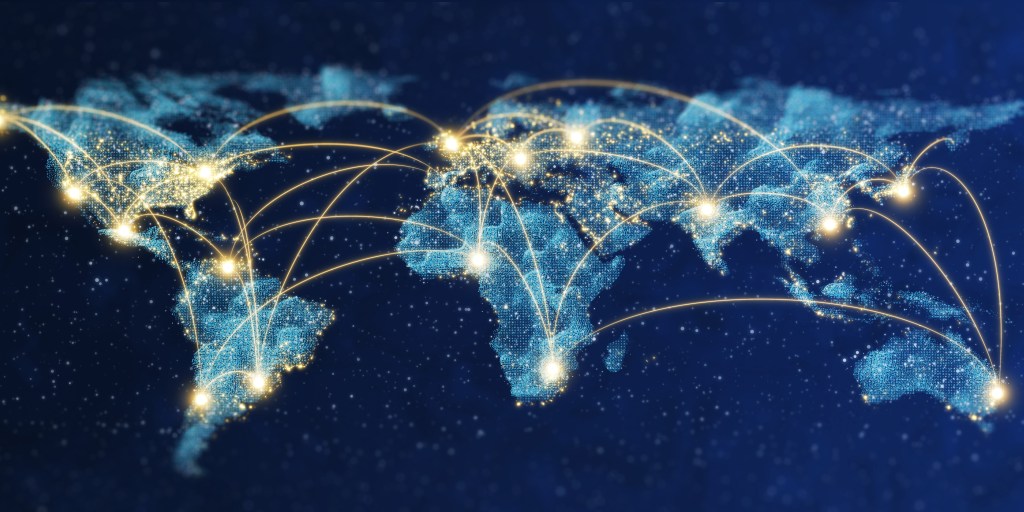Australia needs to build its own foundation AI models rather than exclusively relying on those from China and the US, a CSIRO report warns. It calls the emerging technology risks it sees on the radar ‘bright flashing lights.’

Courtesy: Getty Images
Australia barely cracks the top 20 in a list of the world’s most technically advanced countries, according to Global Finance data. Now, the Commonwealth Scientific and Industrial Research Organisation, or CSIRO as it is known, wants the nation to accelerate its emerging technology and AI capability, and has a plan for how to make it happen.
The key to leading the next frontier of technological advancement is developing sovereign capability through AI foundation models, the national science agency states in a report. It is important to build foundation models in Australia because they are currently built abroad – and may not best represent Australian objectives and values.
“On one hand this is an opportunity – all these great tools are appearing at our fingertips,” says Elanor Huntington, CSIRO’s director of digital and national facilities. “But there is also risk. Will these models boost the competitive interest of Australian companies and workers? Will they behave according to our norms, cultural, and ethical expectations?”
CSIRO operates a ‘technology foresight radar’ to keep an eye on emerging technologies. The radar recently showed ‘bright flashing lights,’ warning that Australia needs to develop homegrown foundation AI models to maximize our ‘economy, environment, and society.’
“They [foundation AI models] are rarely made in Australia – the vast majority come from the United States and China. Our industry is becoming increasingly dependent on these models.”
CSIRO Director of Digital, National Facilities & Collections
The CSIRO report issued this week comes on the heels of Treasury data that discloses that the rate of GDP growth is expected to slow in the coming decades. The government warns that the last 40 years of rapid GDP growth should not be expected for the next 40. Projections for productivity growth are also down – from 1.5% per year to 1.2%.
Digital technology is needed to pick up the slack – making AI more relevant to economic growth than ever.
“The ‘expanded use of digital technology’ could be one of the key (few) factors which increases productivity, income growth and living standards. Given its novelty and broad applicability AI – and in particular foundation models – can be considered one of the most prospective ways of shifting the dial on productivity growth,” the CSIRO report reads.
Huntington cautions that creating foundation AI models should be a capability built in Australia.
“AI foundation models might be Australia’s best chance of reversing the productivity slump – something that’s happening in most advanced economies worldwide,” says Huntington. “They are rarely made in Australia – the vast majority come from the United States and China. Our industry is becoming increasingly dependent on these models.”
What are AI foundation models?
The exorbitant cost (and low supply) of graphic processing units (GPUs) and supercomputers needed to build foundation AI models means that they are largely developed by technology conglomerates based in the U.S.
“AI foundation models are typically trained on vast troves of data using unsupervised learning at scale, and support wide-ranging downstream tasks – many of which may not have been envisaged by the developers. They’re a powerful and novel development in the AI field. Examples include BERT (Google), GPT-4 (OpenAI), Llama2 (Meta AI). These models are made accessible via tools such as ChatGPT, Google Gemini and Microsoft Copilot. They can be multi-modal working with text, audio, images and video,” the CSIRO report reads.
Huntington says that Australia is at the beginning of a journey into AI, and there are many questions that need to be answered as we proceed forward.
“Can we be adapting, fine-tuning or building our own AI foundation models to support our own industry and workers? If so, how should we go about doing this? What’s Australia’s best placement in the global value chain for AI foundation models?” asks Huntington.

Sovereign capability
Another concern raised is whether our nation has sovereign capability in the AI realm. It is a concept that is being explored globally, as nations reflect on not just the emergence of large language models and advanced AI capability, but also the learnings from being isolated during the pandemic.
NVIDIA, a US-publicly traded company that has seen immense growth over the last year due to increased demand for GPUs to build AI, is a proponent of nations developing sovereign AI. The tech company defines it as ‘a nation’s capabilities to produce artificial intelligence using its own infrastructure, data, workforce and business networks.’
CSIRO’s definition is similar.
“Sovereign capability is the ability of nation-states and governments to maintain societal, industry and economic functioning, and ensure the needs of industry and society are met if trade and technology-sharing with the outside world is shut down,” the report states
CSIRO questions whether Australia can ‘build, operate and manage AI technology drawing upon data, skills, knowledge, models and computational resources’ that are available domestically. The government’s ability to ‘deliver functions and services using AI technology despite changes in the ecosystem of private-sector AI suppliers’ is also questioned in the CSIRO report.
Sovereign capability in AI is important to ensure the following factors are managed:
- Competitive markets and pricing
- Reliability and stability
- Cultural relevance and sensitivity
- Confidentiality, privacy and security of information
- Geopolitical risks
- Workforce impacts
- Ethics and content moderation
Developing sovereign capability in AI may also lead to an increase in GDP from products being exported.
“Australia is more of a downstream user, rather than a maker, of AI products. However, there’s every possibility that Australia’s R&D sector could develop AI foundation models in target/niche areas and increase the number and value of exportable commercial AI products,” the report reads.
What needs to be done?
To achieve sovereign AI capability, the report recommends federal, state and local governments in Australia apply the following policy levers:
- Build high-performance computing infrastructure and democratise (and prioritise) access.
- Negotiate bilateral or multi-lateral international collaborations to share AI expertise and resources.
- Increase workforce skills via training, education and improved access to national and global talent pools.
- Develop resources, policies, regulations and testing systems to ensure the productive, safe and ethical development of AI foundation models.
- Identify, validate and make available datasets which co.uld be used to train AI foundation models.
- Invest in building, adapting (fine-tune) and applying AI foundation models to improve government functions.
Most Technologically Advanced Countries In The World 2023
| 1 | South Korea | 6.63 |
| 2 | United States | 4.94 |
| 3 | Taiwan | 4.90 |
| 4 | Denmark | 4.79 |
| 5 | Switzerland | 4.68 |
| 6 | Israel | 4.10 |
| 7 | Finland | 3.94 |
| 8 | Netherlands | 3.79 |
| 9 | Sweden | 3.76 |
| 10 | Norway | 3.59 |
Look back on the week that was with hand-picked articles from Australia and around the world. Sign up to the Forbes Australia newsletter here or become a member here.


